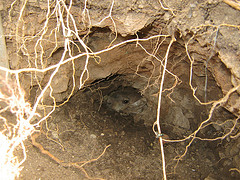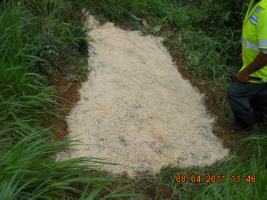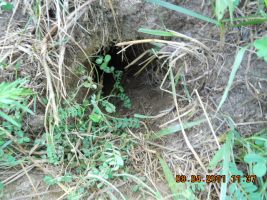
This little bugger is destroying the dam!
The purpose of stormwater ponds is to collect polluted stormwater that would otherwise flow into a natural body of water during an event of precipitation. In order to do this correctly, there needs to be a stable embankment, or dam, to hold water in the pond.
The natural behavior of groundhogs is detrimental to the structure integrity of these embankments. When they burrow into the earthen fill of an embankment, it can establish new flow channels. These flow channels are unstable and can erode quickly if water flows through them. If the flow channels get too close to going through the dam (extending from the pond area to the downstream dam face), they can lead to catastrophic dam failures. Such a failure can be a huge liability for dam owners as the sudden rush of water can damage anything in its path including roads, homes or other structures, and the environment.
Clearly, it is important to make sure that ground hogs or similar burrowing animals are kept out of stormwater facilities. Sadly, these cute little guys must be eradicated by trapping or other means and the burrows must then be repaired with the appropriate compacted soil.

After
However, the best method of dealing with a possible groundhog invasion is to take preventative measures. This includes mowing and regular upkeep of vegetation around the embankment and annual inspections. Overgrown vegetation is the ideal condition for groundhogs and other rodents to burrow and makes it difficult to tell when they begin to get established in their new home. Combined with annual inspections, proper vegetation management is the key to keeping these guys in check.

